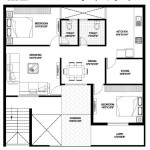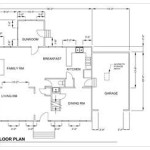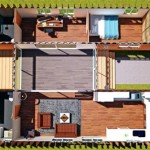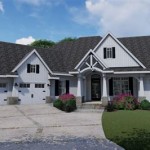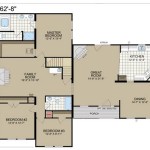House Plans for Mountain Views: Designing Homes to Embrace Nature's Splendor
For those seeking a serene escape amidst breathtaking mountain landscapes, a home with captivating mountain views can fulfill both their architectural and lifestyle aspirations. Designing a house plan that harmonizes with the surrounding natural beauty requires careful consideration to capture the panoramic vistas while ensuring privacy and comfort.
When planning a house plan for mountain views, several key factors play a crucial role:
Site Selection and Orientation:
The location and orientation of the house on the property are paramount. Position the home to maximize exposure to the desired mountain views, ensuring the main living areas, bedrooms, and outdoor spaces face the mountains. Consider the sun's path throughout the day to benefit from natural light and warmth, especially during the winter months.
Window Placement and Design:
Large windows and ample natural light are essential for framing the mountain views and blurring the lines between indoor and outdoor spaces. Utilize floor-to-ceiling windows in living areas, bedrooms, and dining rooms to create a seamless connection with the surrounding nature. Bay windows and picture windows can also provide extended panoramic views.
Indoor-Outdoor Connection:
To fully immerse yourself in the mountain views, establish a strong connection between indoor and outdoor living spaces. Design a deck, patio, or terrace that seamlessly extends from the interior, offering a comfortable spot to relax and enjoy the panoramic vistas. Consider incorporating retractable walls or large sliding glass doors to enhance the indoor-outdoor flow.
Architectural Style and Materials:
The architectural style of the house should complement the mountain landscape. Rustic, mountain-style homes with natural stone, wood, and timber elements blend harmoniously with the environment. Use materials such as glass, metal, and concrete to create a more contemporary aesthetic that emphasizes the views.
Privacy and Screening:
While enjoying mountain views is a priority, maintaining privacy is equally important. Design the house plan to incorporate strategic landscaping, such as trees, shrubs, and fences, to screen unsightly areas or protect from neighboring properties. Consider using strategically placed window treatments to control light and preserve privacy when desired.
Sustainability and Energy Efficiency:
Mountain homes often experience extreme weather conditions. Plan for energy efficiency by incorporating passive solar design principles, such as passive solar heating and natural ventilation. Utilize sustainable materials, energy-saving appliances, and renewable energy sources to minimize environmental impact.
Additional Considerations:
In addition to the above factors, consider the following elements when designing a house plan for mountain views:
- Elevation and altitude: Impacting building codes, materials, and insulation requirements.
- Slope and topography: Affecting site grading, drainage, and accessibility.
- Access to utilities and infrastructure: Ensuring adequate water, electricity, and sewer services.
- Maintenance and accessibility: Planning for snow removal, exterior maintenance, and year-round accessibility.
By carefully considering these factors and implementing innovative design solutions, architects and homeowners can create houses that not only capture the breathtaking beauty of mountain views but also provide a comfortable, sustainable, and inspiring living environment.

Mountain View House Plan Lodge Plans

Mountain View House Plans 3 Bedroom Floor Hillside Designs One Level

Mountain View Craftsman Home Architectural House Plans

Mountain House Plans By Max Fulbright Designs

Mountain View Ward Cedar Log Homes

Appalachia Mountain A Frame Lake Or House Plan With Photos Plans Rustic

Mountain House Plans Homes For Your Getaway

Mountain House Plans By Max Fulbright Designs

Why Building A Mountain House Plan Is Great For Your Family Dfd Plans Blog

Plan 012h 0041 The House


